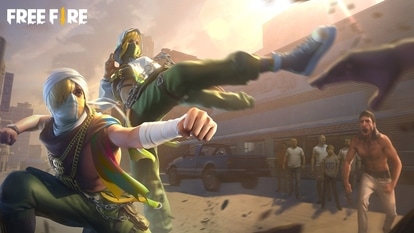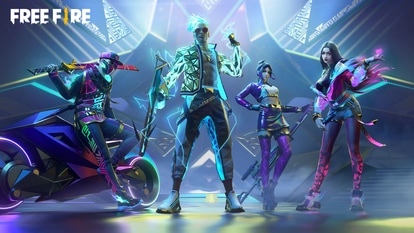Solar Storm Gift! View the Aurora Borealis This Winter in a Private ‘Igloo’ on a Lake
Nowhere in the world has accommodation options quite like Iceland’s.


Ever awakened in a floating igloo to the thunderclap of ice breaking from the glacier outside? Or had your morning coffee upset by the mini tidal wave after one these freshly fractured icebergs splashed into your lagoon? Well, no, nor had I.
Those were just some of the unexpected encounters my wife and I had on our last-minute, late-summer break in Iceland. We ended up in an “Igloo Boat,” a yurt-like structure with a private deck on the Fjallsárlón Glacier Lagoon, on Iceland's southeast coast. Floor-to-ceiling windows — and a glass ceiling — make for an immersive experience as you bob alone on the water at the melting end one of the world's great ice caps.
During the summer, the two available pods float on the lagoon. In the winter, for peak aurora borealis viewing season, they'll sit on the ice as soon as the lagoon freezes over, around mid-January.
What is an Aurora Borealis? NASA Explains
Aurora Borealis is caused by the Sun. The Sun sends lots of energy and small particles our way, apart from heat and light. The protective magnetic field around Earth shields us from most of the energy and particles. But when the Sun sends huge amounts of energy, there is a constant streaming solar wind and there are also solar storms generated and that causes . During one kind of solar storm called a coronal mass ejection, the Sun burps out a huge bubble of electrified gas that can travel through space at high speeds.
Some of this energy can breach the Earth's magnetic field at the north and south poles and reach the atmosphere. This energy and particles interact with gases in our atmosphere resulting in beautiful displays of light in the sky. Oxygen gives off green and red light. Nitrogen glows blue and purple.
I'd booked the weird glass pod solely because, by the time I got around to looking, it was the only room available within a three-hour drive of Skaftafell, a national park we wanted to visit, famous for its waterfalls and glacier hikes.
True, a few nearby hostels still had beds available. But we were celebrating our 25th wedding anniversary, and a hostel might have meant no 26th. For sure, I never otherwise would have considered paying the igloo's price: 130,000 Icelandic krona ($896) for one night, with no shower, no breakfast. Our wedding night on Martha's Vineyard all those years ago cost less than half that.
We arrived at our lagoon at the end of a long day. We'd flown into Reykjavik around midnight the night before from London on our way to Boston, because Icelandair lets you stop off for free. It's just one of many clever ways this remote volcanic island gets so many tourists to visit — like adding punk, penis and witch museums to its more natural attractions. As we came in to land, the pilot said to look out the window. A live volcano had erupted just hours earlier, and it was turning the cloud cover red.
It turns out that Icelanders visit volcanoes, so after a short night at an airport hotel, we made a small detour on our way east to Skaftafell. A two-hour hike across the brittle, cooled black lava flows of last year's eruption took us to the top of a steep slope. We watched in awe as sheets of blazing magma burst through a seam in the valley floor below, falling back to Earth, not with the roar you might expect but the sound of waves crashing on a beach. Only these waves were hot. Really, really hot.
Hundreds of people were making the hike up the mountain as we returned. And when we reached Fjallsárlón Glacier Lagoon near Skaftafell later that day, Pawel, our ferryman to the igloo, said his friends had driven through the night to be on the volcano's lip first thing in the morning. He was far too nice to say so, but he couldn't go with them because he got stuck with us.
It's crazy enough to be taken out to your hotel room by Zodiac, passing icebergs as you go. Then to chill a bottle of Champagne in lagoon water and lie in bed as you drink it, watching the sun set on on a glacier's 25-meter-high ice cliff. But where else could we have woken at 5 a.m. to noon sunshine and the boom — every 10 minutes or so — of yet another centuries-old slab of ice falling away from the cliff face into the water? One of the resulting waves almost tipped me into the water.
We knew, of course, what global warming is doing to glaciers. To witness it was altogether different. We sat, mesmerized on the deck until 9 a.m., when Pawel showed up to collect us in his overgrown dinghy. As we left we could see the morning's crop of new icebergs, small in the distance as they began to float out into the lake. The only traces they left were the patches of fresh blue ice on the glacier's white cliff face, where they had broken away.
“We think of it as a tour,” says Steinþór Arnarson, owner and manager of Iceberg Boat Tours at Fjallsárlón Glacier Lagoon, the Zodiac business he began 10 years ago. “People are not flying in to luxury accommodation, but to a unique experience.”
It was that. Our “igloo” was in reality an advanced, €50,000 ($51,465) Aurora Hut — a heavily insulated, partially glass walled, heated and cooled ice-fishing pod. It had a fancy boat toilet, a small kitchen and little black manhole covers in the floor for dropping hooks into the water, should you be so inclined. Made in Finland (where they really like their ice fishing), the huts look a bit like an Apollo space capsule, if Scandinavian designers had been put in charge of the interior decor.
When I questioned his price point, Arnarson went silent for a while as he calculated the cost of buying, transporting and installing the two units owned by the tour outfit; about €170,000.
Then there is the ferrying: Every guest gets a private tour of the lagoon as they are taken to and from their pod. In winter, you'll go by ATVs that can also float (just in case), according to Steinthor. The cleaners have to be taken out in Zodiacs, too. Then he has to budget for cancelations when the weather is unsafe, for lifting the pods out of the lagoon during storms, and for keeping someone on duty at the tour base in case of emergency. (There's a button.)
I felt a bit less of a dupe already.
Just making sure the pods would be secure from floating away (to get crushed by icebergs) took months of testing from their delivery in February to their release for use on July 20. We were Arnarson's third set of paying guests. He said he had no plans to buy additional huts to improve the economics just because it would then be hard to ensure that no guest would see another across the lagoon.
All of that expense and complication may also help explain why, as far as Arnarson knows, there isn't another floating-glass-igloo-on-a-glacier-lagoon hotel room experience in the world. “On a cruise ship, I suppose you could see this happen. Or maybe in Argentina? I don't know,” he said. “There aren't many glacier lagoons.”
This southern tongue of the massive Vatnajokull glacier used to stretch all the way across today's lagoon until about 1900 but started receding in 1920, leaving behind about 2 kilometers (1.24 miles) of water. Nowadays, it shrinks from 30 to 50 meters annually. Incredibly, the giant glacial ice cap — close to 1 km thick at its deepest — covers several volcanoes. Occasionally, they erupt underneath it, causing floods as the ice melts. Layers of what looks like soot in the glacier's cliff-like face mark ash left by eruptions over the centuries.
Arnarson says he really bought the two huts for the winter, so as to extend his 10-year-old boat tour business beyond the short summer season. Until he found the Finnish-made huts, he'd been thinking of building his own. Arnarson says that come January he'll drag the pods like sleds across the ice and sit them among the now-fixed icebergs.
You won't, in winter, hear new icebergs breaking off the tip of the glacier's tongue, or wake up to midday sunshine at 5 a.m. But you will be able to watch the shimmering Aurora Borealis through a glass roof from your bed as you lie among icebergs. I had suggested to Arnarson that he might also stretch to offer a few croissants for breakfast. Maybe even a shower, back at the tour base? “That is an idea,” he said, in his dry, Icelandic way.
He has since included dinner and breakfast baskets, but there's still no shower — and don't bother asking for a flexible check-in or check-out. Sadly, the global inflation pandemic has reached Iceland, so the price for a night on the ice lagoon now comes to 145,000 krona. Even so, we're sorely tempted to go back.
Catch all the Latest Tech News, Mobile News, Laptop News, Gaming news, Wearables News , How To News, also keep up with us on Whatsapp channel,Twitter, Facebook, Google News, and Instagram. For our latest videos, subscribe to our YouTube channel.





















